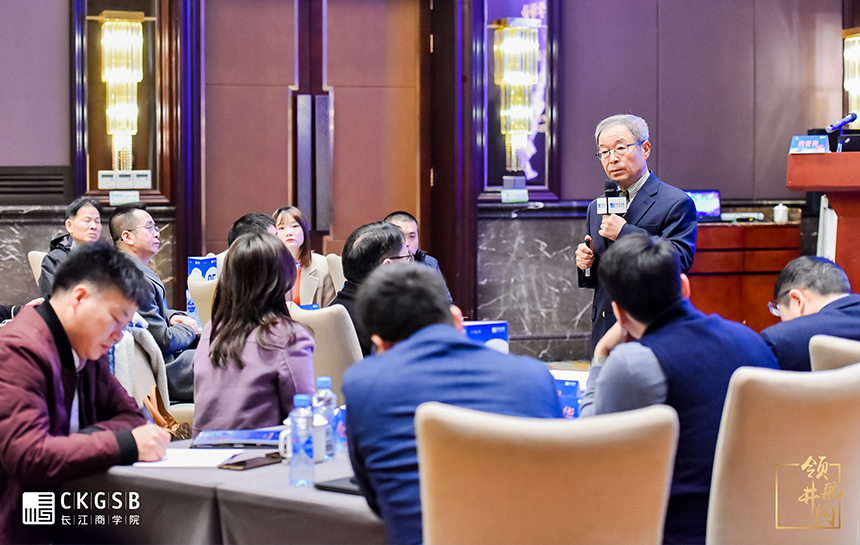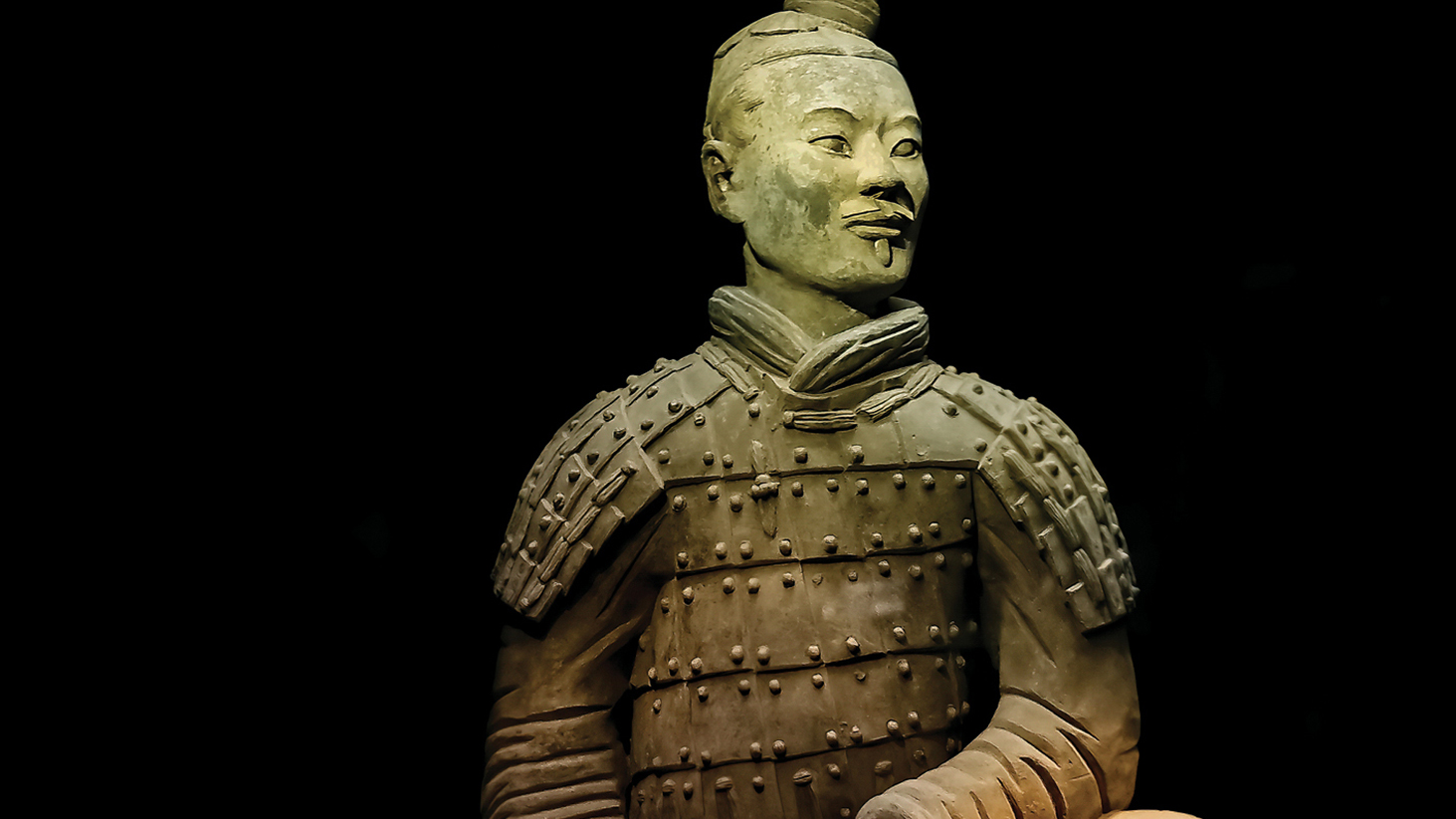An MBA field study by Min Yan, a case researcher at CKGSB, under the guidance of Professor Xinyu Fan, digs into the details of bringing prosperity to every corner of China.
One of the great successes of China in recent decades has been the sharp rise in prosperity across previously poor regions of the country, using a variety policies and initiatives to bring people into the mainstream of economic life, to provide income where there was none and to create economic opportunities that would provide self-sustaining support.
The poverty problem has been addressed in fundamentally three ways: support from and actions by government, social organizations and private enterprises. A prime example of the creative coordination that has allowed China to announce this year “the end of poverty” is Xinxian, a rural county in central China, about 440 kilometers southeast of Zhengzhou City, the capital of Henan Province.
In 1983, 82% of Xinxian’s residents lived below the poverty threshold, but on August 8, 2018, the Henan provincial government announced that Xinxian had officially been dropped from its list of impoverished counties. They did it with a mix of initiatives and cooperation and using tourism, farming, education and manufacturing as the drivers.
In this study, we looked at three key aspects that helped to reduce poverty, the bodies involved and how the measures were implemented:
1) Targeted and improved labor training and sending labor overseas
2) Development of rural tourism
3) Synergy between local for-profit enterprises and poverty alleviation policies
Labor training and export
Xinxian is a remote location, but the number of passport holders has reached 124,000 (33.7% of the county’s total population), far higher than the national average. The reason is some 8,000 Xinxian residents now work overseas, which amounts to 10% of the county’s working-age population. Xinxian now ranks first among counties and county-level cities across the nation ion passport ownership, and the foreign exchange income earned by overseas workers in 2017 amounted to more than RMB 1 billion ($150 million). In the same period, the fiscal revenue of the local Xinxian government was only RMB 501 million.
The export of labor and cultivation of talent have been crucial supports for poverty alleviation in Xinxian. Since 1984, Xinxian has shipped contract workers to many Chinese construction companies around China, and since 1991, around the world. In 2011, the Xinyang International Vocational Institute was founded, and the poverty alleviation model of “foreign vocational education + foreign high-paying employment + returning to China for entrepreneurship” was born. By the end of 2017, Xinxian had sent 38,000 laborers to more than 20 countries and regions, including Japan, Singapore and South Korea. The accumulated foreign exchange resulting has reached RMB 10 billion.
Vocational education
Vocational education in Xinxian is based on the concept of “demand-driven talent cultivation.” People are trained as needed, thus greatly improving the quality of overseas workers and achieving growing numbers of new workers each year. The training program is divided into three stages:
The first is vocational skills training for domestic laborers in construction, mechanical and electrical engineering, sewing, auto repair and similar areas. The second, implemented after 2002, involves systematic international labor training that focuses on improving the overall quality of the trainee and cultivating talents that meet the requirements of foreign employers. The training focuses on aspects such as professional technical training, foreign language training, legal and regulatory knowledge.
The third stage was the establishment of Xinyang International Vocational Institute in 2011, which has gradually developed five streams of courses, including entrepreneurship education, quality-oriented education, skill-oriented education and practical education. Each aims to improve the practical ability of students to adapt to society and enterprises more quickly. As of August 2019, Xinyang International Institute had 3,240 full-time students, and more than 3,000 students in short-term training courses.
Returning entrepreneurs
On their return to China, graduates from Xinyang International Institute often end up using the entrepreneurial knowledge learned in the college, the advanced service concepts acquired overseas and accumulated capital to create businesses. Others work for Japanese- or South Korea-funded enterprises in China’s coastal cities, or take government office jobs. In addition to entrepreneurial education, Xinyang International Institute helps graduates by coordinating loans from financial institutions and winning policy support from various government departments.
Building tourism
With the development of China’s tourism industry and years of effort by the government of Xinxian, tourism has grown into a “foundation industry” for the local economy. In the past three years, the revenue generated by tourism and the number of tourists arriving in Xinxian have both maintained an annual growth of more than 20%. In 2018, Xinxian received 6.363 million tourists and its tourism revenue reached RMB 3.31 billion, a year-on-year growth of 35.7% and 42.5% respectively. The tourism industry contributed 23.5% to the county’s gross domestic product.
Xinxian has a permanent population of 280,000, of whom 50,000 work in tourism and related industries, which has helped raise the annual per capita income of poor households to nearly RMB 8,000. Thirty-two key villages in the county have lifted themselves out of poverty, and more than 11,000 individuals below the poverty line have steadily increased their income through the development of tourism.
China categorizes tourist attractions ranging from 1A being the lowest to 5A being the highest. Actively led by the government, four 4A scenic spots and six 3A scenic spots have been created in Xinxian stressing three concepts:
–Red tourism: Xinxian was a local headquarters for the Communist Party in the early 1930s, and is famous as an old revolutionary base area. There are 365 Red tourism destinations in the county, and more than two million tourists visit “red” sites annually.
–Green tourism: With densely forested mountains, Xinxian’s has a forest coverage of 76.7%. It is one of the two national ecological counties in Henan Province.
–Rural tourism: There are 26 villages and 23 scenic spots in the county, and each has a team of experts responsible for planning and forming a differentiated landscape to attract tourists.
Pharmaceuticals for the common good
In 1988, with a loan of RMB 258,000, the Xinxian government established the Xinyang Lingyangshan Pharmaceutical Factory to help alleviate poverty, and after restructuring, Lingrui Pharmaceutical was listed on the Shanghai Stock Exchange in October 2000. By 2018, annual revenues of Lingrui Pharmaceutical reached RMB 2.05 billion, making it the leading enterprise of medical plaster in China.
Over the past 30 years, apart from charity work such as donations to education and flood relief, Lingrui Pharmaceutical has created its own initiatives on poverty alleviation through employment and industry. This case focuses on Xinyang Lingrui Ecological Agriculture Co., Ltd., a wholly owned subsidiary of Lingrui Pharmaceutical that established a demonstration base of Chinese medicinal materials in Xinxian. It has guided local farmers to grow traditional Chinese medicinal materials, helping to stabilize supplies of medicinal materials for the company and to assist farmers escape from poverty, while aiding the government to complete poverty alleviation.
Lingrui Pharmaceutical’s contribution to local poverty alleviation is multi-dimensional. In areas of conventional poverty relief, financial aid and flood relief, its donations total nearly RMB 50 million. In terms of employment and poverty alleviation, by 2018, there were nearly 2,100 employees in Xinxian with an average monthly salary of about RMB 3,000. In terms of industrial poverty alleviation, Lingrui Pharmaceutical mainly aids farmers through camellia oil production and traditional Chinese medicine products, which also creates value for company development.
Camellia oil industry
Lingrui Pharmaceutical set up Henan Lvdashan Camellia Co., Ltd. and Xinyang Lvdashan Camellia Resources Development Co., Ltd., and developed the camellia industry for poverty alleviation following the model of “company + professional cooperative + base + farmers”. It has built a refined camellia oil production process with an annual output of 5,000 tons.
Due to the large-scale production of camellia oil, the purchase price of camellia seed per kilogram has increased from RMB 4 in 2010 to RMB 13.5 in 2017. Farmers in mountainous areas can earn more than RMB 16,000 per year. After deducting RMB 5,000 in input and labor costs, the net annual income can reach more than RMB 10,000.
By the end of 2018, Lingrui Pharmaceutical had transformed large areas of low-yield forest and attracted tens of thousands of farmers to work in the industrial chain. Its “camellia model” of targeted industrial poverty alleviation has achieved a great social response.
Traditional Chinese medicine industry
In 2014, Lingrui Pharmaceutical established Xinyang Lingrui Ecological Agriculture, which has helped farmers escape poverty and accumulate wealth in a variety of ways. Xinyang Lingrui Ecological Agriculture:
-invested RMB 15 million at the beginning of 2014 to establish a traditional Chinese medicine demonstration base. Through land reform, farmers are able to earn rent, and each family receives an annual income of more than RMB 1,200. By working in the base, more than 30 farmers have increased their annual income by RMB 5,000 or more per capita;
-provides free seeds and seedlings as well as technical services for poor farmers who grow traditional Chinese medicine. It also signs a guaranteed buyback contract with farmers to guide poor farmers to grow traditional Chinese medicine materials, increasing the annual income of each poor family by more than RMB 3,000;
-has signed household income increase contracts with 458 poor families in 12 administrative villages, including Yangfan of Shawo Town in Xinxian. Each poor family gets more than RMB 450 annually from dividend income. Through income earned from Chinese medicine cultivation, policy support, and dividends of land, labor and project, every poor family can increase its income through Chinese medicine cultivation by about RMB 3,000 per year.
Belladonna plantation
Belladonna, also known as wild solanum, is an herbaceous plant and one of the main raw materials for bulk medicinal materials in Lingrui Pharmaceutical. Stability in supply and price is important for enterprise operation, but fluctuations in supply is inevitable because of the planting process, uncertain planting cycle of the medicinal farmers and other factors. If a buyer takes advantage of the low price to purchase the ointment and stores it for sale, they could increase the price sharply.
In recent years, Lingrui Pharmaceutical’s annual demand for belladonna unguent has been about 600 tons. According to the industry, 1 kg of unguent is extracted from 10 kg of belladonna. Due to the influence of climate, diseases and pests, the yield of belladonna per mu varies between 250 kg and 500 kg.
Given that the average yield is 300 kg per mu, Lingrui Pharmaceutical needs about 20,000 mu of planting area for belladonna. Belladonna also has strict crop rotation restrictions. To obtain better planting effects, a piece of land must not plant belladonna or other nightshade plants in the second and third year after planting belladonna in the first year. Planting can only take place again in the fourth year.
As a result, at least 60,000 mu of land is needed for crop rotation to meet Lingrui Pharmaceutical’s raw material demands. At present, the planting area of belladonna in Xinxian is only 3,000 mu, and a large amount of belladonna planting and promotion is needed to meet its own demands.
Sustainability
Due to the large initial investment, Lingrui Ecological Agriculture is yet to make a profit and relies on the parent company’s investment and subsidies. At present, the cost of obtaining belladonna unguent is RMB 200,000 per ton. That is, one ton of unguent requires 10 tons of dry belladonna, at RMB 12 per kilogram, which amounts to RMB 120,000; the extraction cost is about RMB 80,000 per ton. The market price for the unguent is usually RMB 100,000-200,000 per ton.
The novel practice of Lingrui suggests an implementable way to shoulder corporate social responsibility. In particular, the poverty-alleviation-oriented belladonna planting benefits both villagers under and above the poverty line, while stabilizing the supply of the plant to the company. However, several questions remain: How significant is the impact of the strategy used in increasing the income of participating villagers? Is it sustainable? Are there any risks from production, and from competition? The answers will shed new light on how corporations may achieve common good in business, and in society.
Looking ahead
Alleviating poverty is a goal of great social significance for China, and all parts of society should play a role. Xinxian provides an example of how the advantages and resources of different players can be used to achieve that goal, with profit not necessarily being the primary motive. However, the best methods are still those which are commercially viable and sustainable over the longer-term. There is a good chance that each of the three methods detailed here—including the training of workers for employment either overseas or in China—can be sustainable to the benefit of Xinxian and to China as a whole.


















